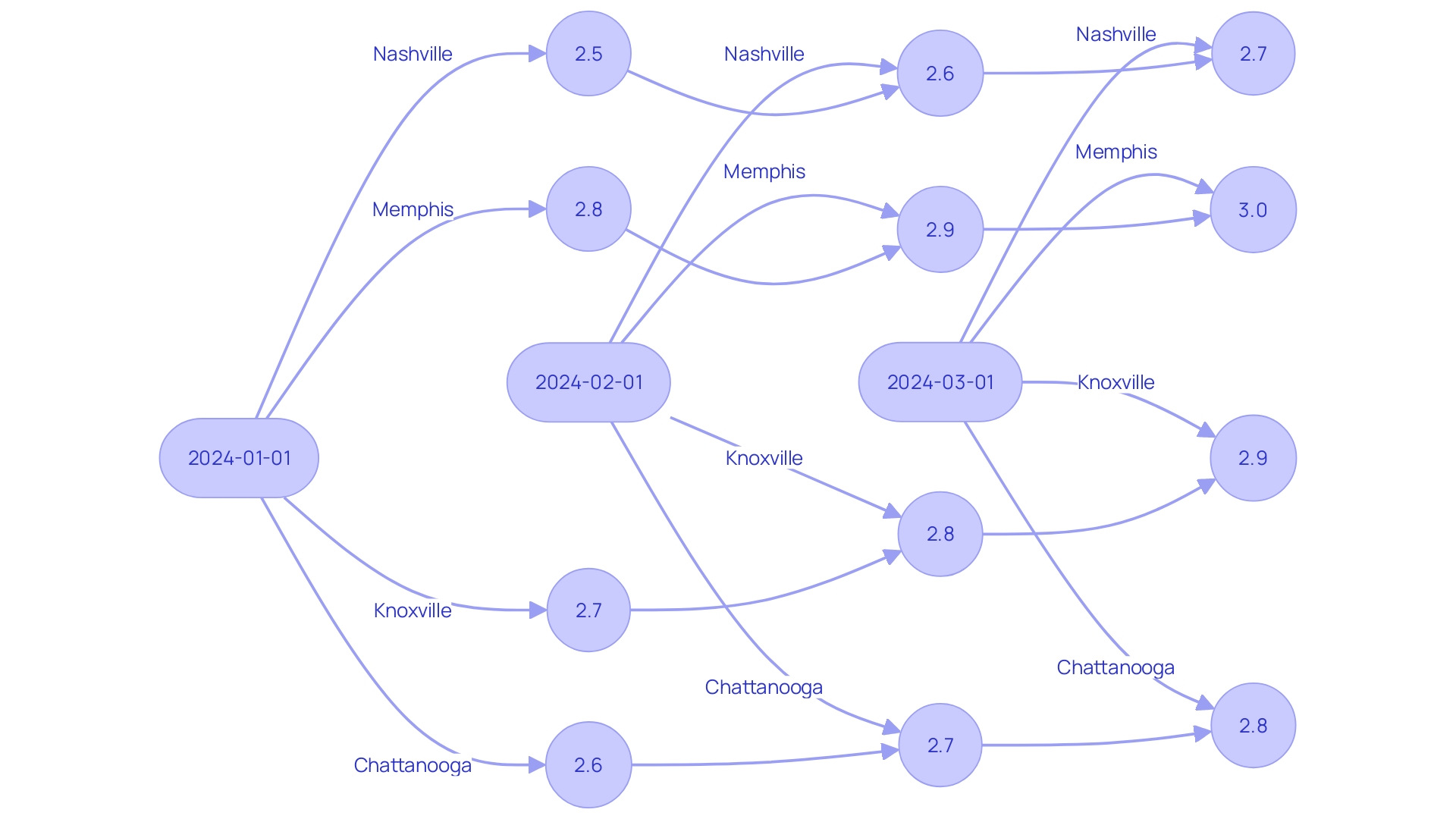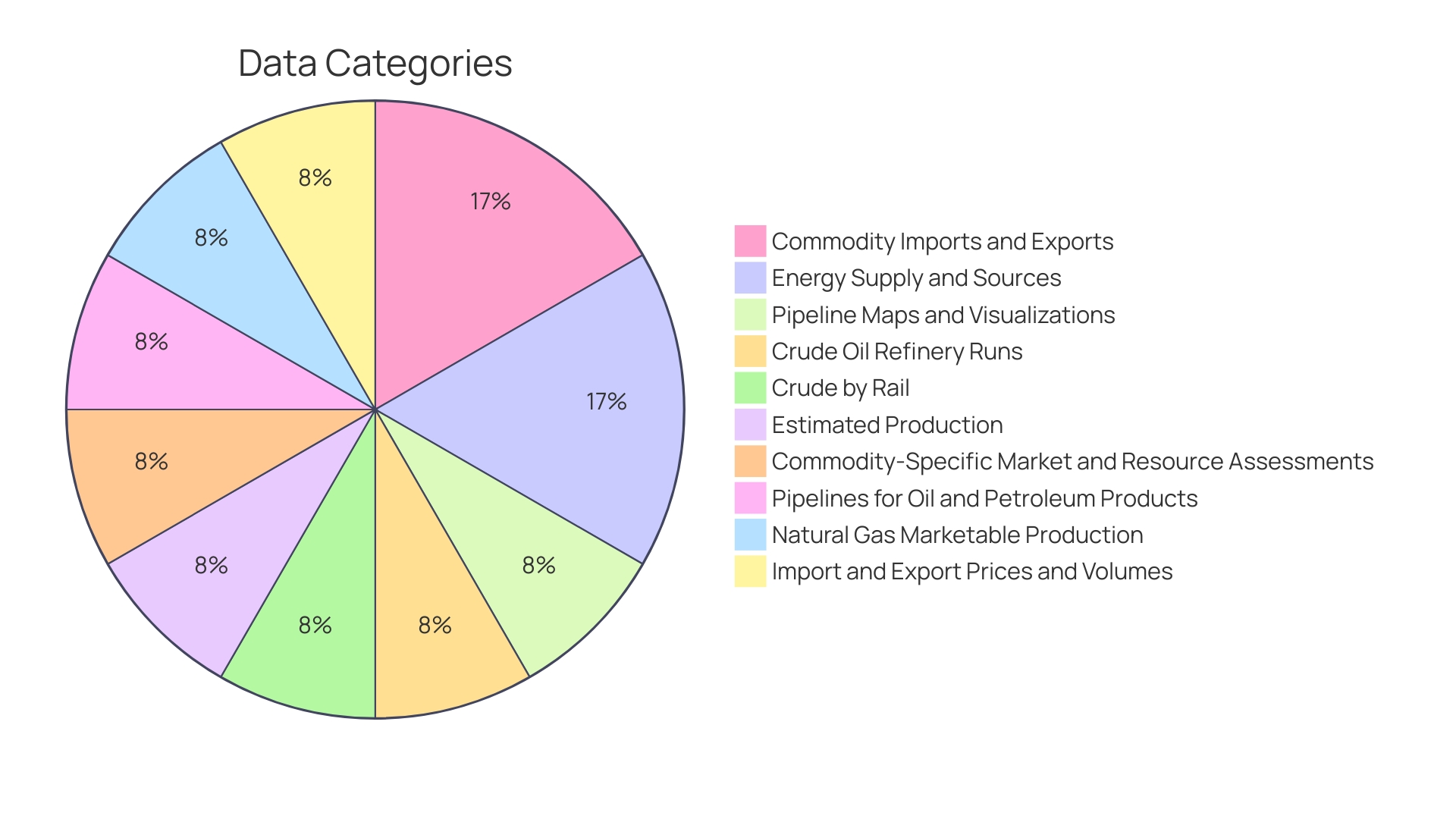Introduction
Gasoline prices in Nashville are influenced by a multitude of factors, ranging from supply and demand to geopolitical developments. However, recent statistics reveal a promising trend for motorists in the area. The national average for gas prices has decreased by 38 cents over the past month, reaching a new low since late March.
This downward trend is partly attributed to seasonal adjustments and alleviated refinery complications. Drivers in 33 states now have the option to refuel at stations offering gas for $2.99 per gallon or less. Gas prices not only affect individual consumers but also impact the broader economic framework and political discourse.
The debate between increased domestic oil and gas production and the recognition of oil's global market nature adds complexity to addressing this challenge. In Nashville, where gas prices hold particular relevance due to its growth and demand for fuel, the descending trajectory of prices provides relief for consumers and businesses as they navigate through the ever-evolving energy landscape.
Current Gas Prices in Nashville
Gasoline costs demonstrate a dynamic nature, reacting to a multitude of catalysts that range from shifts in supply and demand to geopolitical developments and evolving market patterns. Nashville has not been immune to these fluctuations. As we explore the current state of gas prices in the area, recent data from GasBuddy reveal a promising development for motorists. The average cost of gas nationwide has undergone a substantial decrease, dropping by 38 cents in the previous month, with additional decreases expected. As of October 31, the average has reached a new low since late March, standing at $3.44 per gallon, with projections suggesting a potential drop of an additional 10 to 20 cents by year-end.
This declining trend in costs is partially attributed to seasonal adjustments, such as decreased fuel consumption during colder months and the shift to winter-grade gasoline. Moreover, reduced refinery issues, specifically in the West Coast and Corn Belt areas that encountered increased costs in the final months of summer, have contributed to the decline. Motorists in 33 states now have the choice to fill up at stations providing fuel for $2.99 per gallon or below, a significant relief after enduring increased costs.
The impact of gas costs extends beyond individual consumers, affecting the wider economic structure and echoing in political discussion. With the upcoming election, gas costs have risen to the forefront of important concerns. The debate between increased domestic oil and gas production and the recognition of oil's global market nature underscores the complexity of addressing this challenge. For households earning less than $50,000 annually, the majority of which own vehicles, the pinch of rising gas costs is palpable, influencing not only those who drive but also mass transit users who may eventually face increased fares.
In a city that has attracted a surge of residents since the Great Recession due to its blend of urban appeal and affordable living, the fluctuation of gas costs hold particular relevance. John Eldridge, CEO of E3 Construction Services, has observed the growth and the corresponding demand for fuel in the city since 2008. With gas prices currently on a descending trajectory, both consumers and businesses in the city can breathe easier, albeit cautiously, as they navigate through the ever-evolving energy landscape.

Tennessee Gas Price Trends
When exploring the intricacies of gas costs within Tennessee, it's essential to take into account the state-wide context to fully understand the factors at play in Nashville. An exhaustive analysis of the past data reveals a distinct storyline of gas cost patterns in the area. Tennessee, like many states, experiences fluctuations influenced by a myriad of factors, from seasonal shifts to refinery production changes. For example, recent reports show a significant decrease in the national average gas cost, falling 38 cents in the past month, with additional projections indicating a further decrease of 10 to 20 cents by the end of the year. This phenomenon is evidence of the seasonal decrease in demand as colder weather arrives, alongside the shift to winter gasoline formulations. Furthermore, enhancements in refinery operations, which formerly caused surges in costs because of interruptions in the West Coast and Corn Belt, have played a role in the alleviation of prices. In this city in Tennessee, these broader patterns are noticeable, yet they may appear distinctively when compared to other cities within the state, emphasizing the significance of localized analysis.

National Gas Price Context
While analyzing the complex movement of gas costs, it is clear that the overall patterns have a significant influence on regional markets such as Nashville. The recent report from October 31, 2023, signals a welcoming decrease in the national average by 38 cents over the preceding month, with projections showing a further descent of 10 to 20 cents by year's end. Currently, the national average hovers at $3.44 per gallon, marking the lowest point since late March. This trend is buoyed by a confluence of seasonal adjustments—diminished fuel consumption due to cooler weather and the transition to winter-grade gasoline, now completed nationwide. Moreover, refineries, particularly in the West Coast and Corn Belt regions, are recovering from earlier disruptions, contributing to this downward trajectory. Considering the gas prices in Nashville correlate with the national average, these broader economic indicators are vital in comprehending the local fuel landscape and anticipating future movements in cost.
Factors Influencing Gas Prices
The cost of gas in Nashville is influenced by a complex network of factors. The cost at the pump is not only a reflection of the cost of crude oil and the complexities of refining, but also encapsulates the nuances of taxes, distribution, and the competitive landscape of the market. As we analyze each element, it becomes clear that the fluctuations in gas costs are a direct response to a range of both local and global stimuli.
Natural gas is increasingly taking center stage in the conversation about energy transition due to its cleaner burning properties compared to coal. Its role in electricity generation is expanding, leading to improved air quality and reduced carbon emissions. This shift is not only pivotal for environmental benefits but also plays a significant part in the pricing dynamics of gas, as it now forms a vital component of the global energy mix.
The demand for natural gas is driven by its use in electricity production, commercial and residential heating, and various industrial applications. Its affordability, stemming from its abundant supply, has positioned it as a transitional fuel in the path toward a cleaner energy future. Nevertheless, the consequences of this shift are experienced throughout the economy, especially when gas costs increase. Such increases can adversely impact consumers, especially those in lower- and moderate-income households, many of whom rely on cars for transportation. The broader economic implications are underscored by the fact that 80% of households with annual incomes under $50,000 own a car, and over a third of these households own more than one vehicle.
The interaction between domestic oil and gas production and its minimal influence on global market costs is a subject of political discussion, especially in the midst of increasing gas costs that have become a central point in elections. The intricate balance of local production and global market forces brings to light the complexity of fuel pricing and its wide-reaching effects on everyday life and the broader economy.
The growth and transformation of this city into a business hub attract new residents, changing the urban landscape and influencing living costs, including gas prices. The city's evolution from a music-centric locale to a nexus for health care, manufacturing, and technology sectors reflects a diversifying economy, further complicating the gas cost equation as demand patterns shift.
In summary, comprehending the various factors influencing gas costs in the city of Nashville offers valuable understanding into the wider economic and environmental patterns shaping the energy industry. As these factors continue to evolve, so too will the strategies for effectively navigating the challenges of fuel pricing.
Comparison of Gas Prices Across Tennessee Cities
In Tennessee, the difference in gas costs from one city to another can be striking, and the fuel expenses in the capital of Tennessee are especially noteworthy. An examination of the gas costs in Nashville compared to Memphis, Knoxville, and Chattanooga reveals patterns and factors that contribute to the variations in pricing. For instance, recent data indicates a national pattern of declining gas costs, with the national average decreasing 38 cents in the previous month. GasBuddy reports that the average cost of gas has reached its lowest since late March, with further declines expected. This trend is influenced by seasonal changes, such as reduced fuel consumption during colder months and the transition to winter-blend gasoline. Furthermore, enhancements in refinery operations, which previously encountered disruptions, also contribute to the reduction of gas costs. These observations are not only important for the residents and businesses of a city in Tennessee for economic planning but also reflect wider market forces that could indicate what is expected for fuel costs in the area.

Historical Gas Price Data in Tennessee
Exploring the historical gas data in Tennessee, specifically Nashville, reveals patterns and trends that go beyond mere numbers—they narrate a tale of economic and environmental changes over time. An examination of this data uncovers how different events have historically impacted gas costs. For example, modifications in electricity production techniques, like the transition from coal to natural gas, have directly influenced fuel consumption and efficiency, thus impacting the cost of gas. The introduction of new methodologies, like the allocation of fuel consumption between electric power generation and useful thermal output, has also led to perceived improvements in the efficiency of electric power production, with downstream effects on fuel markets.
Moreover, the evolving landscape of Nashville, from its roots in country music to becoming a hub for health care, manufacturing, and technology, has played a role in shaping its energy demands. The city's growth, with about 98 new residents per day in 2022, has increased the need for energy, influencing local gas prices. Moreover, the city's initiatives to enhance air quality and lower carbon emissions by shifting from coal to cleaner natural gas for electricity production mirror wider patterns in energy consumption and pricing.
Even as the city enjoys the benefits of no state income tax and a lower cost of living, which attracts new residents and businesses, these factors converge to create a dynamic and ever-changing fuel economy. Every one of these components, from alterations in policy to the increase in population and considerations regarding the environment, adds to the intricate tapestry of the historical cost of gas in this city, highlighting the significance of comprehending these interrelated influences while predicting potential future patterns.

Impact of Global Events on Gas Prices
The complex tapestry of global events continues to impact local economies, and gas costs are no exception. The gas prices in this location are influenced by a wide range of international factors, including the geopolitical repercussions of distancing from Russian energy dominance and the historical significance of oil as a strategic commodity during global conflicts. The shift from oil to natural gas as a primary energy source is a testament to natural gas's increasing role in the global energy mix, influenced by its environmental benefits and role in powering economies. Notably, natural gas has become a pivotal asset in the transition to cleaner energy, reducing carbon emissions and improving air quality, further intertwining its market dynamics with global policy and economic developments.
Economic reports indicate a divergence in the cost of living, with housing costs escalating while gasoline costs have recently dipped more than 10%, reflecting the dynamic nature of the energy market. It is evident that while fuel costs in the city of Nashville are experienced at a local level, they are closely linked to and impacted by these global occurrences and trends. As such, understanding these connections is crucial for businesses and individuals aiming to navigate the complex terrain of fuel economics and secure their financial future amidst fluctuating markets.

Future Projections for Gas Prices in 2024
As the city continues to grow and evolve from the economic shifts since 2008, its vibrant expansion has direct implications on fuel consumption and related costs. With John Eldridge, CEO of E3 Construction Services, highlighting the continuous growth of the city's boom over the recent years, it's essential to examine the projected impact on gas prices for 2024. The city's development trajectory, fueled by an urban renaissance and increased migration, suggests a heightened demand for gasoline and diesel, which could influence pricing dynamics. Furthermore, the national gas market trends, including the anticipated growth in natural gas demand by over 20% through 2028, underscore the importance of understanding the interconnectedness of local and global energy markets. Natural Gas Intelligence emphasizes the role of liquefied natural gas exports, exports to Mexico, and power generation as key drivers. This upswing in demand, coupled with Nashville's economic vitality and the Kansas City Fed's quarterly surveys, provides a foundation for forecasting 2024 fuel costs. Such predictions are not only pivotal for individual budgeting but also for businesses strategizing fuel-related expenses amidst seasonal and geopolitical shifts. GasBuddy's 2024 Fuel Outlook provides additional insights, indicating a nuanced perspective of the highest and lowest state-specific gas costs, and how much Americans might expend on gasoline in the upcoming year. As financial consultants offer free initial consultations to navigate these economic waters, it's clear that the implications of gas price trends extend far beyond the pumps. They are a microcosm of broader economic patterns, reflective of Nashville's growth and the global energy landscape.

Conclusion
In conclusion, the recent decrease in gas prices in Nashville is a promising trend for motorists. The national average has dropped by 38 cents over the past month, reaching a new low since late March. This is attributed to seasonal adjustments and alleviated refinery complications.
Drivers in 33 states now have the option to refuel at stations offering gas for $2.99 per gallon or less, providing relief for consumers.
Understanding the multifaceted drivers behind gas prices in Nashville is crucial. Factors such as the shift towards natural gas as a cleaner energy source, the interplay between domestic production and global market forces, and the growth and transformation of Nashville as a business hub all contribute to the complexity of fuel pricing. Adapting strategies to effectively navigate these challenges is essential.
Furthermore, global events play a significant role in shaping gas prices in Nashville. From geopolitical developments to the increasing role of natural gas in the global energy mix, international influences impact local economies. Understanding these connections is vital for businesses and individuals seeking to navigate fluctuating markets.
Looking ahead, it is important to consider future projections for gas prices in Nashville. The city's growth and increased demand for fuel, along with national gas market trends, highlight the interconnectedness of local and global energy markets. It is crucial to factor these projections into fuel cost forecasting and expense planning for the coming year.
In summary, the recent decrease in gas prices in Nashville provides relief for consumers and businesses. Understanding the drivers behind gas prices, the impact of global events, and future projections is essential for effectively navigating the challenges of fuel pricing in the ever-changing energy landscape.




